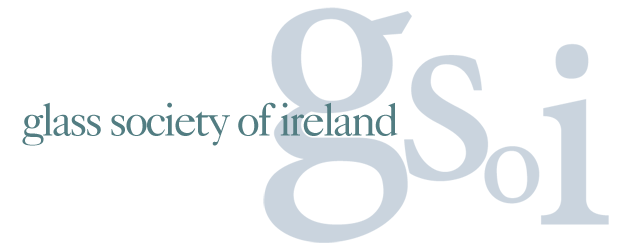by Fiona Byrne
In the lead up to the opening of the Ulysses Cylinders exhibition by Dale Chilhuly and Seaver Leslie with Flora C. Mace and Joey Kirkpatrick a lecture was held at Dublin Castle. This lecture looked at the making of the exhibition, glass in Ulysses and also gave an insight into why the artists and organisers decided, almost forty years after the exhibition’s original conception, to recreate this iconic show.
The evening began with introductions from Paula Stokes and Róisín de Buitléar, who have both been instrumental
in getting this exhibition to Ireland for its very fitting launch to
coincide with the Bloomsday festivities. A screening of the making
process of these beautiful pieces took place and the complexities of
the artistic process were clear. These pieces have been lavished in gold, had
delicate and intricate glass drawings melted into their surface, and then
skilfully blown to their final shape. This labour intensive process
encapsulates the love and effort on the part of everyone on this project to
make the vision of the Ulysses Cylinders a reality.
The passion for the project is infectious.
Seaver Leslie gave a wonderful talk about his role in the project and his
respect for his fellow artists, including Joyce himself, is worn on his
sleeve. His modesty is such that he comes across as a man who is proud to have
been allowed to be part of this project and not as one of its main characters.
However, once he began to speak you can feel the connection and depth of
knowledge that he has for his subject matter.
He stressed the links with Ulysses and Joyce that
go beyond a mere visual representation of the book. ‘Proportion
is everything in the making of art’, Leslie tells us, echoing the harmonics of
proportion in Ulysses. The joy of discovery also links these two artists we
learn as Leslie recounts the story of finding a description of glass blowing in
Ulysses and describes the emotion and pride he felt at his discovery. This is
something which translates to the objects in the exhibition, as Róisín
de Buitléar pointed out, you have to walk around each piece to get the
full picture, you have to actively seek it.
Relationships are important in this project and
ownership is not seen as an issue. Leslie expresses how all art steals and
borrows inspiration from others. This exhibition is about collaboration and
creation, using the ideas and talents of a group to push the art form to new
levels. His collaboration with Chihuly began a long time ago when Leslie first
encountered Chihuly working the hot work shop in college. He described how
Chihuly’s vibrancy attracted an entourage of fun, creative people.
The contrast between the more singular process of a
painter and this very team orientated process of glass blowing served to draw
Leslie in to the world of Chihuly. He describes himself as being hidden in a
forest and Chihuly being out there causing a storm. I for one am glad he chose
to come out of his metaphorical hiding place and add his talents to the
Ulysses Cylinders project.
Soul is the word which occurred again and again,
finding something deep and essential within art, taking it, and making it your
own. Leslie leaves us with the thought that Ulysses is a spiritual book and not
to be daunted as, ‘you will find what you need’ from it.
After Leslie has spoken Dr. Luke Gibbons takes us
‘Through the glass darkly’ in his talk about the importance of glass in Joyce’s
writing. He tells us that Joyce asked us to look at the glass and not just
through the glass. To illustrate this he described the first scene of the
Dubliners where there is a young boy looking up at the stained glass windows in
a church.
Joyce used glass as a carrier of meaning in various
ways, once saying that ‘only a transparent sheet separates me from madness’. Gibbons
informs us of the fortuitous meeting of Joyce with Thomas Pugh of Pugh’s glass
manufacturers. In Pugh he found a man who had claimed Ulysses as a seminal work
but who operated outside of the academic circles, this, Gibbons tells us, was
Joyce’s intended audience.
Though if seems artistic collaborations can sometimes go awry. Gibbons
tells us of the mix up with a commission involving the artist Matisse who was
asked to illustrate Ulysses. However misunderstanding the commission he
illustrated Homer's Odyssey instead, leaving Ulysses without illustrations.
This project has had its set back also. Thirty nine years ago a tragic
car accident stopped the original exhibition in its tracks and resulted in
Chihuly losing the sight of his left eye. Today the Ulysses Cylinders
exhibition is on display at Dublin Castle after a long time in the making. This
beautiful collection of objects holds more stories than those illustrated on
their surface. They are alive with narratives waiting to be unlocked by the
viewer.



No comments:
Post a Comment